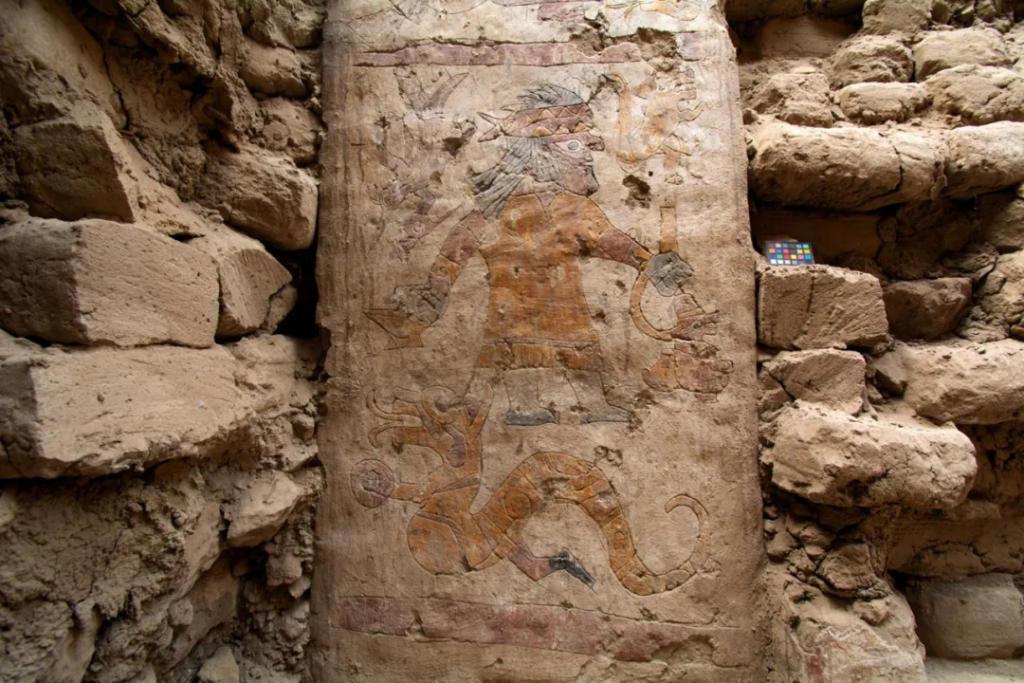
The Moche people controlled the coastal valleys of northern Peru between 350 and 850 CE. In July 2024, archaeologists uncovered a throne room designed for a Moche queen for the first time at the Pañamarca site, a core region of Moche cultural heritage located in the Ancash region of Peru.
The project, which began in 2018, was led by archaeologists Jessica Ortiz Zevallos from the Pañamarca Archaeological Landscape Project, Lisa Trever from Columbia University, and Michele Koons from the Denver Museum of Nature and Science. During excavations in a hall with standing columns, the team discovered exceptionally well-preserved murals. These murals, painted in vibrant blue, red, and yellow hues, depict four scenes featuring a powerful woman. In one mural, the woman is receiving visitors, while in another, she is seated on a throne.
Even more astonishing than the murals was the discovery of a physical adobe throne. The back support of the throne was worn and damaged, likely from prolonged use. The surface of the throne yielded greenstone beads, fine threads, and even a strand of human hair.

Researchers believe the throne was used by a local ruler in the 7th century CE. All evidence points to this ruler being a woman. While powerful women in Moche culture were typically referred to as priestesses, the individual associated with this throne appears to have held actual authority. This discovery prompts researchers to rethink gender roles in Moche society, suggesting their social structure may have been more complex than previously believed. Never before has a queen’s throne room been identified at Pañamarca or elsewhere in ancient Peru.

Pañamarca is renowned for its richly detailed murals, first documented in the 1950s. These murals, located on plazas and platforms, depict processions of priests and warriors, supernatural battles, and rituals involving prisoners and captives.

